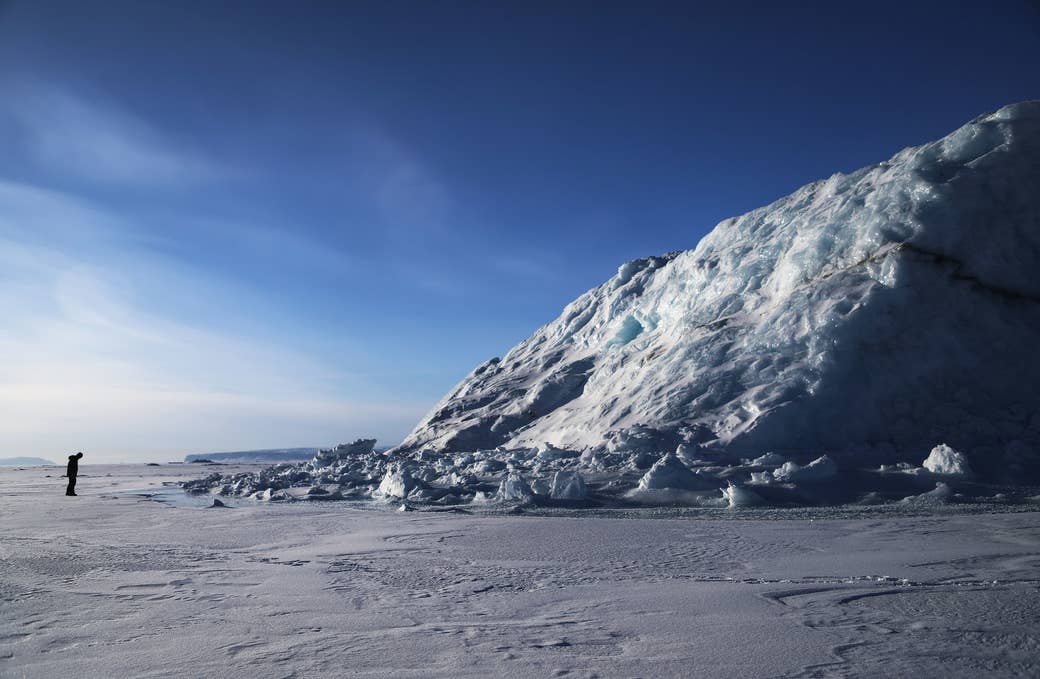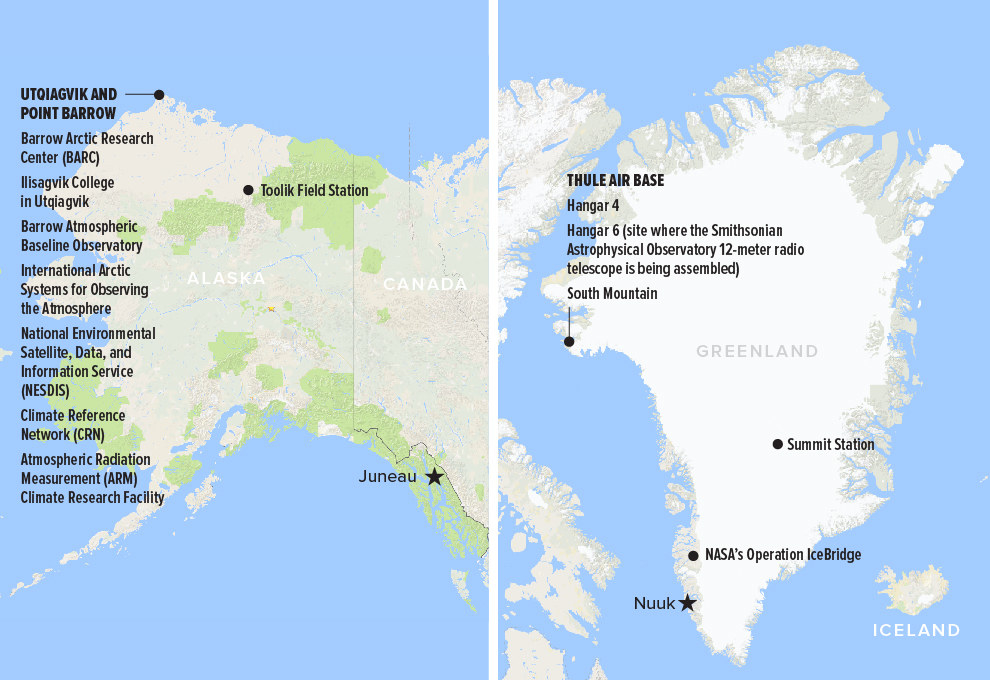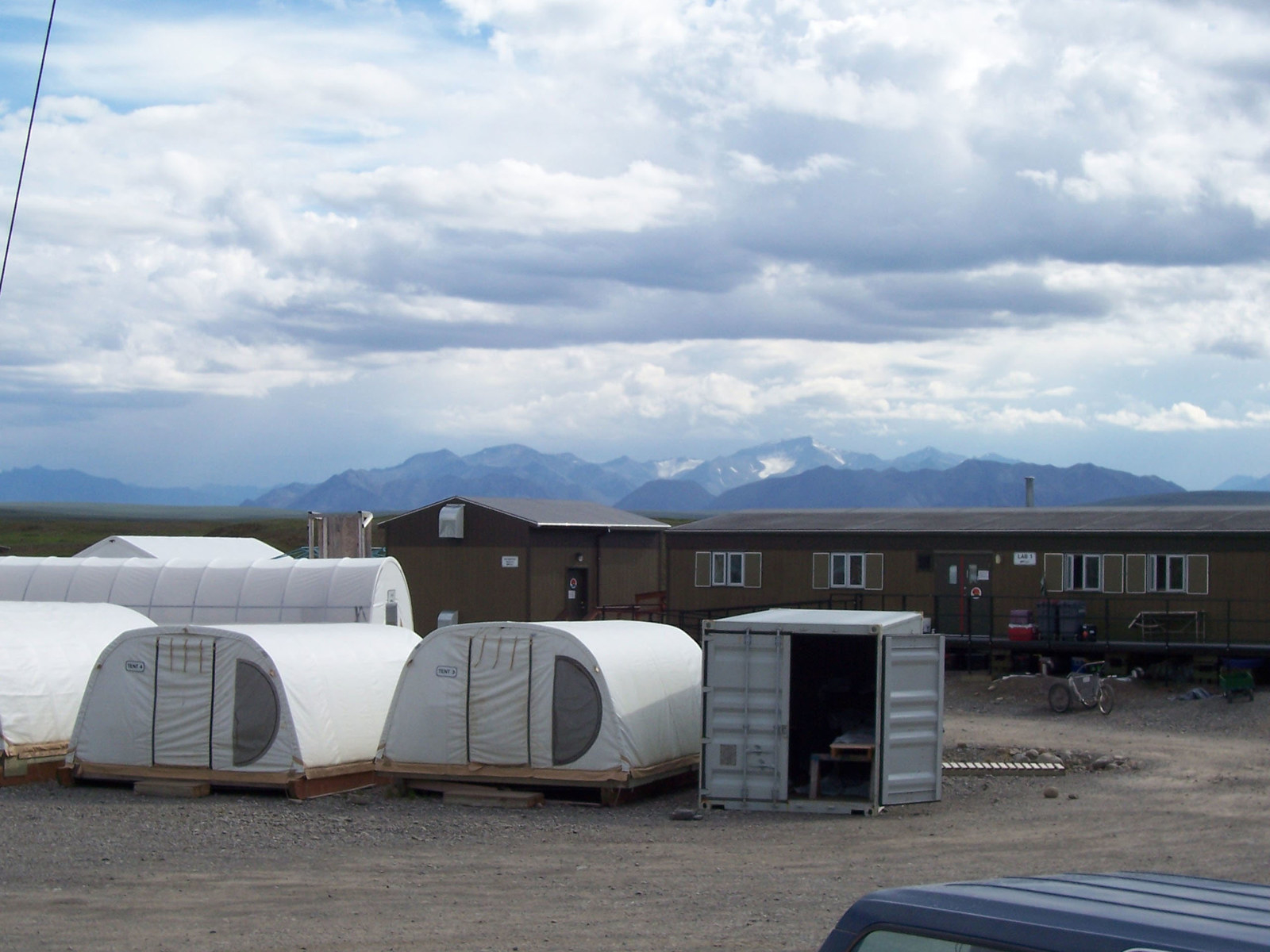Lamar Smith, one of the most vocal critics of climate science in Congress, led a secret trip to the Arctic in May, BuzzFeed News has learned.
He and at least eight other US representatives, mostly members of the House Committee on Science, Space, and Technology, met with scientists working on the front lines of climate change.
It had the potential to be an awkward or even hostile visit. As chair of the science committee for the past four years, Rep. Smith of Texas has waged a public war with federal climate scientists, or “so-called self-professed climate scientists,” as he called them in March. He’s challenged their research and integrity, repeatedly subpoenaed their emails, and voted to gut their funding.
Billed as an oversight visit for the science committee, the May 8–14 trip included a series of closed-door sessions for the politicians to inspect facilities and learn about federally funded science conducted at research hot spots in the Arctic Circle, as well as social events for the lawmakers and their families.
The House Science Committee did not publicize the trip on its website or social media accounts, and did not issue any press releases or public schedules. Neither did the participating lawmakers (although one Twitter account for Democrats on the committee posted several tweets about the visit). Some scientists told BuzzFeed News they were instructed not to talk about it.
In this part of the world, the realities of climate change are hard to ignore. On an aerial tour of Greenland, for example, the lawmakers saw the retreating “sugar top” ice cap and connecting glaciers. Scientists told them about how warmer temperatures had even changed the local insect populations.
“They were pretty clear that 10 years ago they didn’t have mosquitoes in the summer and now they do,” said Rep. Jerry McNerney, a Democrat who joined the committee because he wanted to take action on climate, and who accompanied Smith to the Arctic. “There was some real direct, you know, concrete evidence that things are changing.”
Smith's team canceled a call with BuzzFeed News two minutes before it was scheduled, and subsequently did not respond to questions about the purpose of the trip or his impressions of Arctic research. But McNerney said he had productive discussions with Smith about climate issues.
“It really gave me the opportunity to go over this stuff with him and see how he felt and find that, hey, there really is some common interest here,” McNerney said.

The science tour was what’s called a congressional delegation, or CODEL, a bipartisan trip involving foreign travel that is approved by either the speaker of the House or a committee chair.
These little-known trips aren’t always publicly announced, sometimes because the members of Congress don’t travel with security guards or because the trips target sensitive locations, such as war zones.
Smith approved this trip and paid for the visit with congressional funds, but his team would not disclose how much it cost.
At least nine lawmakers, some bringing family members, went on the trip. These included three Democrats — McNerney and Ami Bera from California, and Henry Cuellar from Texas — and six Republicans: Neal Dunn from Florida, Chris Collins from New York, Frank Lucas from Oklahoma, Mark Sanford from South Carolina, and Smith and Brian Babin from Texas. (McNerney, Bera, and Cuellar confirmed to BuzzFeed News that they attended, and the others were identified by scientists who saw them in person.)
Smith wasn’t the only one who has voiced doubts about climate change or responding to the threat: Lucas, for example, has questioned whether carbon dioxide is a pollutant, and Babin applauded President Trump’s decision to withdraw the US from the Paris climate agreement. Sanford, though, was one of 17 Republicans who introduced a resolution in March to come up with "economically viable" climate change solutions.
The National Science Foundation organized the CODEL’s scientific itinerary, and its director France Córdova went along for part of the trip, too. (NSF covered the trip expenses for Córdova and other agency staffers.)
“The purpose of this CODEL was oversight of the US research investment in the Arctic region by several federal agencies,” according to a document prepared by the NSF for BuzzFeed News.
Stops On The Science Tour

The first stop was the northernmost US city, Alaska’s Utqiagvik (formerly called Barrow). The people who live there face multiple climate threats, such as flooding from rising seas and infrastructure failures linked to the thawing of frozen ground.
At the Barrow Arctic Research Center, the group learned about microbial life in extreme conditions such as sea ice. And at the tribal community college Ilisagvik College, the lawmakers heard presentations on NSF-funded studies of indigenous languages and the effects of a warming climate on Arctic microbes.
“I was less than a month into my job role (Executive Director of Institutional Advancement) and a bit nervous,” Justina Wilhelm from Ilisagvik College wrote in an email. “Overall the visit was positive and I am grateful to have had the opportunity to provide a tour to the NSF congressional delegation.”
The next day, at the Barrow Atmospheric Baseline Observatory, the group learned about how scientists monitor the levels of carbon dioxide and other greenhouse gases in the air, a National Oceanic and Atmospheric Administration spokesperson confirmed.
The second half of the trip was spent hopping between US-run facilities in Greenland. The group arrived at the Thule Air Base, in western Greenland, on May 11. That evening they dined in semiformal wear with researchers at the base’s “Top of the World” officers’ club, according to two researchers who were in attendance.
Nimesh Patel, an astrophysicist at the Harvard-Smithsonian Center for Astrophysics, said he got a heads-up about the visit a week before. He was already going to Greenland for a conference, and scrambled to coordinate flights to get to the remote base after. In Thule, he gave the delegation a tour of a massive telescope under construction.
“I was left with the feeling that they were really interested in the science,” Patel said. This confused him a bit, he added, given the committee’s history of being “not genuinely very supportive, it seems, of science, particularly Lamar Smith.”
Later, the delegation took a P-3 plane above Greenland’s glaciers, seeing firsthand how scientists track the depth of the ice and snow cover.
Some lawmakers, like Cuellar, were interested in the massive ships, called icebreakers, which are vital to national security. McNerney said that he and Smith discussed the economic obstacles to curbing global warming. “He believes you can’t do anything if it’s going to hurt the economy," McNerney said, referring to Smith.
Smith was reportedly no less inquisitive in the Arctic than he is when presiding over his infamous congressional hearings, though the scientists said there were no tense moments.
“It was positive, I can say that,” said a researcher on the trip who requested anonymity for fearing of getting in trouble. “We were asked not to publicize the tour. I want to be careful not to overstep.”

The delegation was supposed to visit the Toolik Field Station on May 10, but the plans were canceled due to the threat of dangerous weather. Brian Barnes, science director at Toolik, along with a few others, traveled to Washington, DC, two weeks later to give a private briefing to interested committee members instead.
“We had just under an hour with 4 congressman [sic] (some stayed for less) and, maybe 6-8 staff,” Barnes wrote in an email to BuzzFeed News. “They asked lots of questions to our short presentations,” he added, about the changing seasons, permafrost, the adaptation of Arctic animals to climate change, and “the potential for discoveries on how mammals hibernate for biomedical applications.”
Before the weather snafu, some Toolik researchers had crafted a strategy for interacting with the lawmakers in the field, according to Brendan Kelly, an Alaskan researcher involved in the planning. They wanted to focus on concrete, ongoing changes in the climate.
“The teaching moment we would have liked to have taken advantage of is to help the House members understand it isn't just esoteric, abstract academic research that matters in places like Toolik,” Kelly said. “Things have more immediate practical applications and significant impacts.”
The trip was welcome news even for Michael Mann of Penn State University, the climate scientist who clashed with Smith and other Republicans on the science committee at a heated climate hearing in March.
Mann had heard rumors about the trip, but did not know that Smith had gone. “To me that suggests positive engagement on their part,” he told BuzzFeed News. “I’m intrigued and puzzled by that.”
“I am very much a believer in redemption,” Mann added, citing former Republican Rep. Bob Inglis, who defended climate science despite political consequences. “We’ve seen some of the most conservative people flip on this issue in the past.” ●
CORRECTION
Michael Mann clashed with Lamar Smith at the March hearing but was not berated by him, as an earlier version of this post stated. The delegation took a P-3 plane above Greenland’s glaciers, not an F-3. The map has been changed to reflect the correct location of Toolik Field Station in northern Alaska.
UPDATE
This story has been updated with information about how the trip was not publicized by the science committee, apart from some tweets from an account representing the Democrats on the committee.
